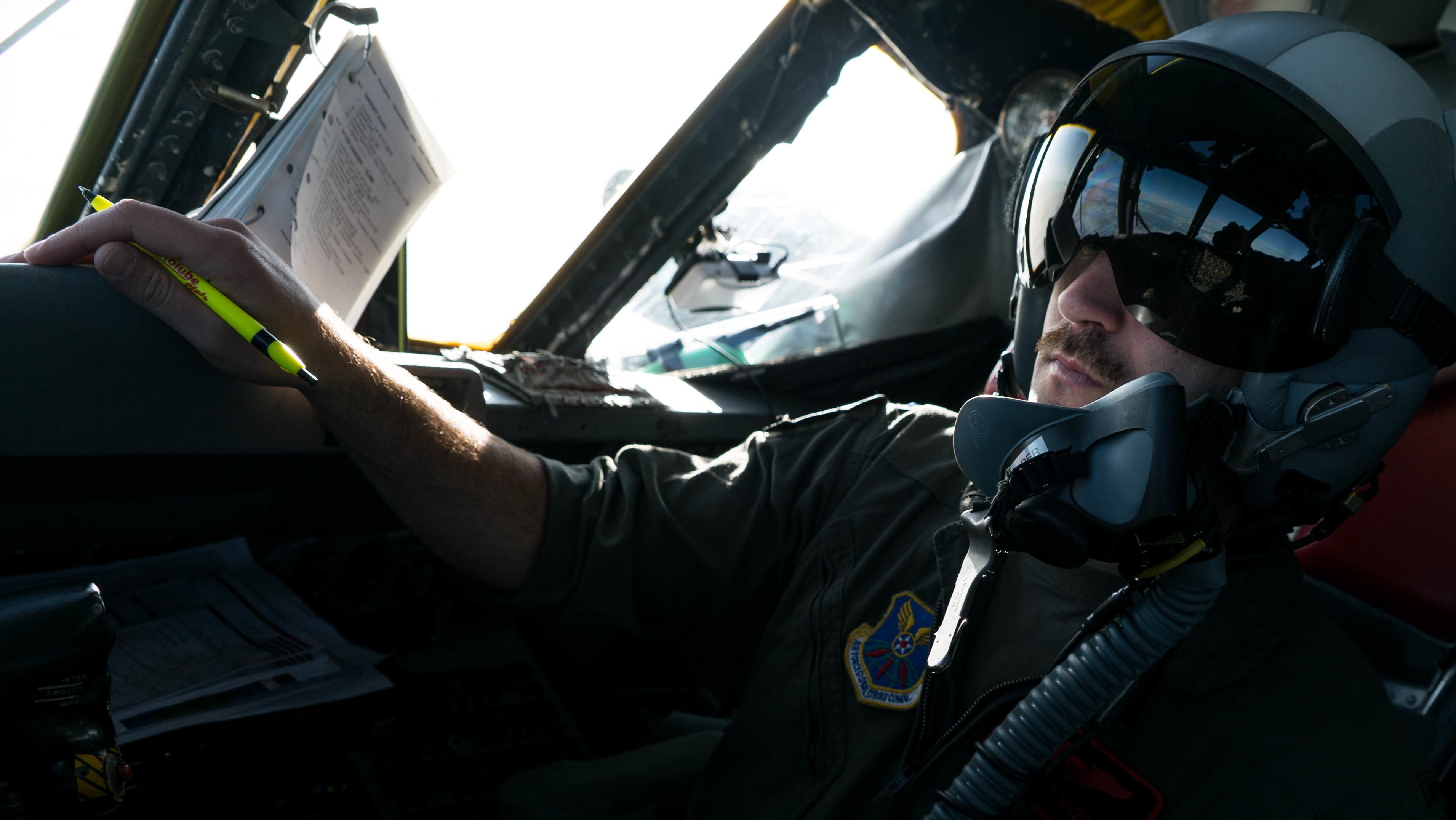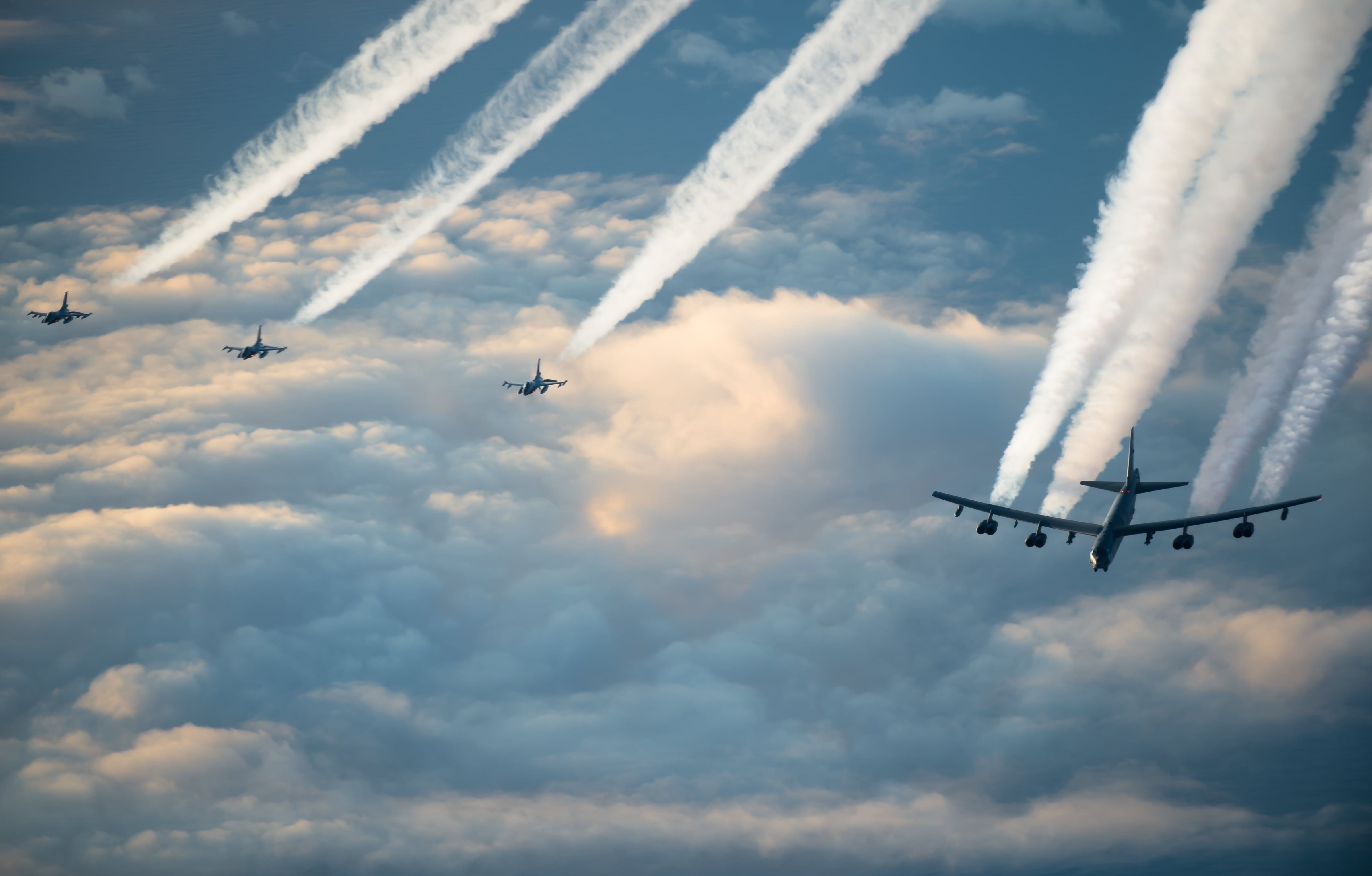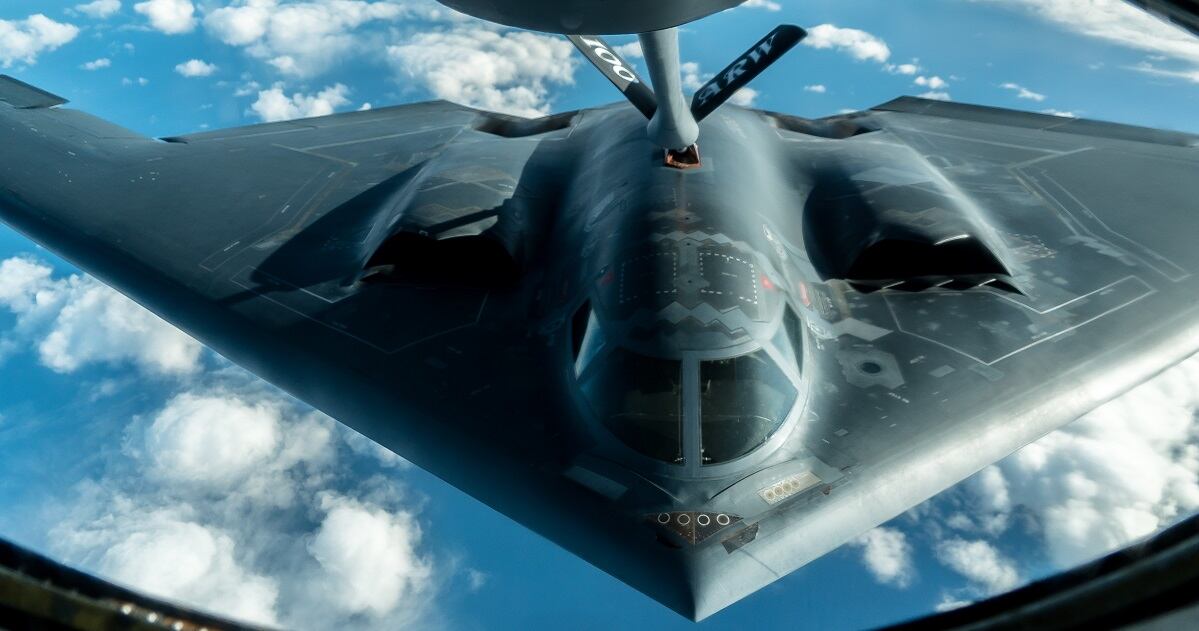B-52H Stratofortresses this week flew training missions with Norwegian F-16s in the Barents Sea region of the Arctic Circle before wrapping up their monthlong deployment to England and returning stateside Friday.
The B-52s, from the 2nd Bomb Wing at Barksdale Air Force Base, Louisiana, deployed to RAF Fairford in England Oct. 10 as part of the four-aircraft Bomber Task Force Europe 20-1.
The three bombers flew to the Arctic Circle Wednesday, according to U.S. Air Forces in Europe and Air Forces Africa. Once there, they conducted integration and interoperability training with at least five F-16s from the Royal Norwegian Air Force, and maritime training with U.S. Navy P-8 Poseidon anti-submarine aircraft assigned to Commander Task Force 67, which were operating in the region. A KC-135 Stratotanker from RAF Mildenhall in England refueled the aircraft during the mission.
It was the last in a series of flights in which the task force trained with allied and partner air forces, including a 12-hour mission Oct. 21 to the Black Sea region to fly with counterparts from Romania, Ukraine and Georgia.
RELATED


Global Thunder
The bomber task force also took part in U.S. Strategic Command’s recently completed Global Thunder 20 exercise, STRATCOM officials said in an Oct. 31 news release. The two-week exercise included a bomber fly-off in which B-2 Spirits and B-52s took off from the United States and connected with the B-52s deployed to England.
Twenty Stratofortresses scrambled within a 12-hour period for Global Thunder 20, said Global Strike Command spokeswoman Linda Frost in an email Wednesday. The B-2s and B-52s integrated with allied fighter aircraft from Poland and the UK over Europe, then returned to their home stations.
Global Thunder 20, which included simulations and training opportunities, focused on joint operations, command and control objectives, and nuclear force readiness, STRATCOM said.
“I am proud of the hard work and dedication all of our USSTRATCOM team members put toward successfully achieving our overall goals,” STRATCOM Commander Gen. John Hyten said in the release. “These integrated exercises not only test our skills, but also how we communicate and synchronize with our components, partner combatant commands and allies.”
The Stratofortresses in the bomber task force took off from Fairford Friday to head back to Barksdale.
“This deployment enhances global stability and security while enabling units to become familiar with the area of responsibility,” USAFE said in Wednesday’s release.
The Air Force previously deployed six B-52s from Barksdale to Fairford in April, and also sent a task force of B-2s from Whiteman Air Force Base in Missouri to Fairford in August.
Shawn Snow contributed to this report.

Stephen Losey is the air warfare reporter for Defense News. He previously covered leadership and personnel issues at Air Force Times, and the Pentagon, special operations and air warfare at Military.com. He has traveled to the Middle East to cover U.S. Air Force operations.




